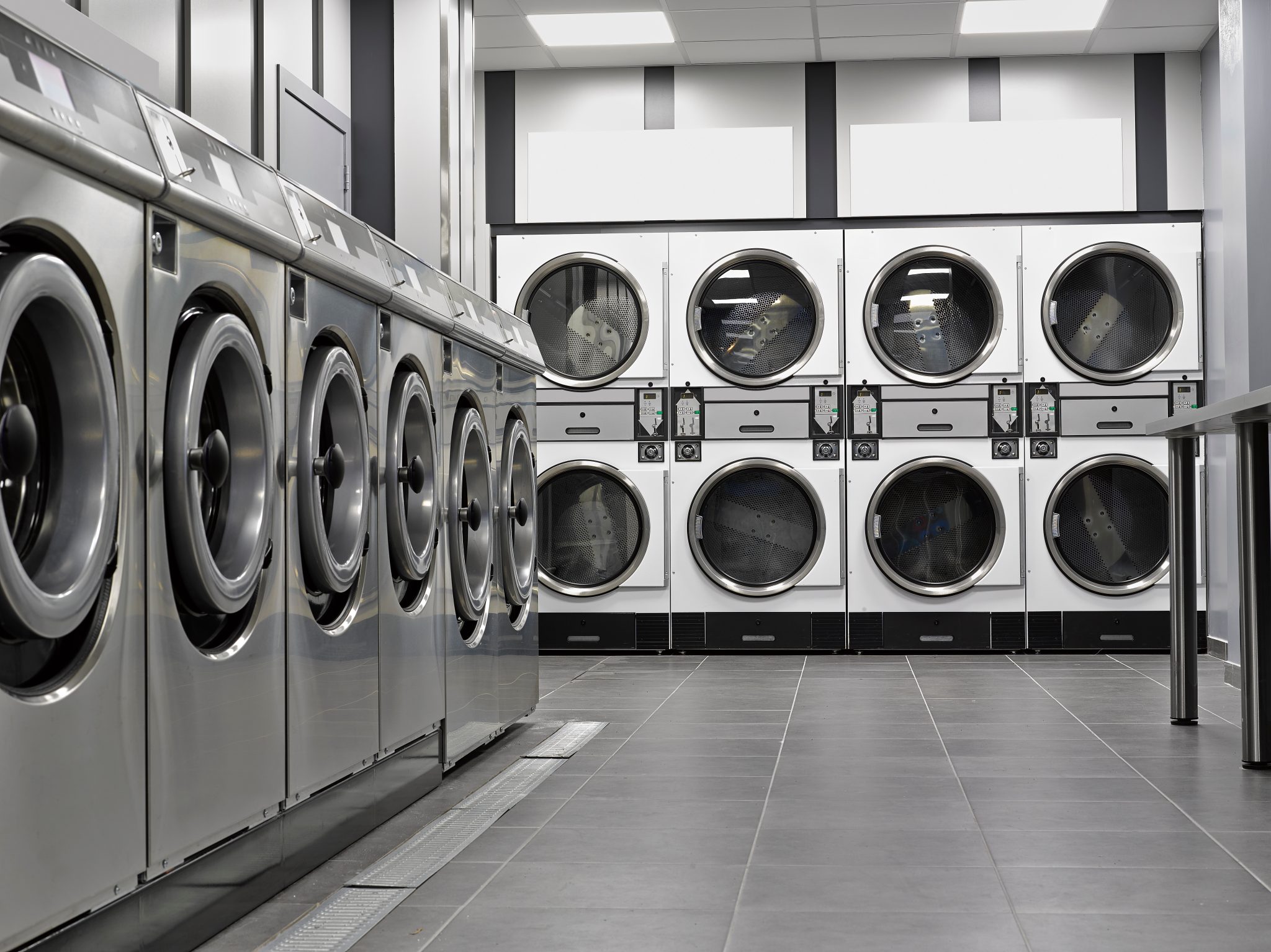Laundromats have played a crucial role in making laundry more convenient for households and businesses alike. Over the decades, these coin-operated (and now often card-operated) facilities have evolved significantly—adopting new technologies and offering innovative services like wash-and-fold and even pick-up and delivery. Below are 20 facts that illuminate the history, operations, and trends behind laundromats.
-
The First Coin-Operated Laundromat
The concept of a self-service laundromat traces back to 1934, when the first coin-operated laundry business—known as a “Washateria”—opened in Fort Worth, Texas. Within just a few years, the idea spread to other cities, as apartment-dwellers and those without personal washing machines flocked to these convenient facilities. By eliminating the need for an in-home washer, the Washateria was transformative for working-class families who relied on laundry lines or handwashing methods. Today, the original site no longer exists under its founding name, but the Washateria concept kick-started an entire industry that continues to expand and modernize.
-
Industry Size
Collectively, laundromats in the United States generate around $5 billion in annual revenue, driven by the constant demand for clean clothes. This figure encompasses both traditional self-service machines and additional services like wash-and-fold, delivery, and dry cleaning drop-off. Furthermore, the coin laundry industry (which now includes card and mobile payment systems) provides thousands of jobs across the country, illustrating its significance as a stable economic contributor. The sector’s resilience is often credited to the consistent need for laundry services, regardless of economic climate.
-
Number of Laundromats
It’s estimated that there are between 30,000 and 35,000 coin laundries in the U.S. serving millions of patrons each week. These self-service locations cater to a wide demographic, from college students and urban renters to traveling professionals and small business owners. According to some industry sources, these facilities collectively serve over 30 million households annually—underscoring how essential laundromats are for those without convenient in-unit washing machines or those needing larger-capacity commercial equipment.
-
Recession-Resistant Model
Laundromats are famously described as recession-resistant, meaning they tend to maintain steady revenue even during economic downturns. During the 2008 financial crisis, many laundromat owners reported stable or increased usage, as people cut back on costly home appliance repairs or moved into smaller apartments with limited laundry options. The inherent necessity of clean clothes—an expense that’s rarely discretionary—positions laundromats as reliable community fixtures, even when other businesses struggle.
-
Commercial-Grade Machines
Most laundromats house commercial-grade washers and dryers, which are engineered to handle heavy loads and frequent cycles. These machines typically run wash cycles faster than their home-based counterparts, often finishing in 20-25 minutes as opposed to 30-45 minutes. Additionally, commercial washers and dryers can have lifespans of 10-15 years with proper maintenance, allowing laundromat owners to generate consistent returns on their equipment investment.
-
Water Usage
Laundry can be water-intensive, but many commercial machines strive for efficiency. While older models might use 30-40 gallons of water per load, newer high-efficiency machines can reduce that figure to 15-25 gallons per load. This not only conserves a critical natural resource but also lowers utility bills for laundromat owners. Over time, upgrading to more water-efficient equipment can represent substantial cost savings, especially for larger facilities with dozens of machines running simultaneously.
-
Transition to Card Systems
Although they’re often referred to as “coin laundries,” an increasing number of laundromats now offer card-operated or app-based payment systems. In fact, industry surveys suggest that by 2020, over 40% of laundromats in urban areas had already introduced cashless transactions. This shift reduces the burden of handling coins, streamlines collection processes for owners, and offers greater convenience for customers who seldom carry cash. It also opens up opportunities for loyalty programs and promotional pricing.
-
Average Load Costs
Costs to run a load of laundry at a laundromat vary significantly by region, machine size, and facility. In many U.S. cities, washing a standard load might cost $2 to $4, while larger loads or high-end machines can range $5 to $8. Drying is an additional fee, commonly priced per minute or as a set cycle fee. These price points often reflect local utility rates, property leases, and the overall cost of living in the area, making it crucial for laundromat owners to optimize efficiency to remain profitable and competitive.
-
Wash-and-Fold Services
Wash-and-fold has grown into a significant revenue driver for laundromat owners, with some reporting that this premium service accounts for 30-40% of their overall income. Customers pay a per-pound rate—ranging from $1 to $3 in most areas—to have laundry professionally washed, dried, and folded. Beyond the direct revenue, wash-and-fold fosters customer loyalty, as busy professionals, parents, and those with limited mobility appreciate the time savings and convenience.
-
Longest Operating Hours
While not all laundromats are open 24/7, surveys indicate that roughly 20% of U.S. coin laundries maintain round-the-clock operations. This approach appeals to shift workers, students cramming in late-night errands, and others who need flexibility in their schedules. Staying open 24 hours can lead to higher utility costs and staffing considerations, yet it often pays off in terms of customer loyalty and steady foot traffic throughout the day and night.
-
Largest Laundromat in the World
Located in Berwyn, Illinois, the World’s Largest Laundromat spans 13,500 square feet and boasts over 300 machines, catering to hundreds of customers daily. In addition to laundry services, it offers amenities like a children’s play area, free pizza nights, and ongoing community events. These extras not only boost customer satisfaction but also highlight how laundromats can evolve into social hubs, reinforcing the idea that they are more than just a place to clean clothes.
-
Sunday: The Busiest Day
Sundays are widely reported as the busiest time for laundromats, with some owners seeing a 30% increase in foot traffic compared to weekdays. Many people reserve laundry chores for the weekend, especially those who work or attend school Monday through Friday. To accommodate peak volume, operators often schedule extra staff and ensure that more machines are readily available, thus reducing wait times and improving the customer experience.
-
Small Business Ownership
Despite occasional franchised chains, the majority of laundromats in the United States are independently owned small businesses. In fact, around 70% of coin laundries are family-run or owner-operated, according to industry data. This makes the coin laundry sector a viable option for budding entrepreneurs looking for a potentially stable venture, as laundry remains a household necessity with consistent year-round demand.
-
Average Customer
While a substantial portion of laundromat customers are renters lacking in-unit washers and dryers, many facilities also serve small businesses in need of bulk laundry services, such as restaurants, salons, and Airbnb hosts. According to some operators, small business contracts can contribute up to 30% of total revenue, especially in areas with dense commercial or tourism sectors. This diversified customer base further stabilizes the laundromat business model.
-
Maintenance Is Key
Proactive, routine maintenance of washers and dryers is crucial, as up to 25% of potential revenue can be lost when machines sit idle awaiting repairs. Ensuring regular equipment checks not only extends the machines’ lifespan but also boosts customer confidence in the facility’s reliability. Many owners implement scheduled servicing and track usage data through machine software to detect early signs of malfunction and minimize downtime.
-
Technological Innovations
Modern laundromats are increasingly adopting smart technology, including IoT-driven machine monitoring, mobile apps for customers to check machine availability, and loyalty-based payment systems. By 2021, around 25% of urban laundromats had introduced real-time machine tracking, allowing patrons to plan visits more efficiently. These tools streamline operations for owners and offer greater convenience for users, positioning laundromats as tech-forward service providers.
-
Environmental Initiatives
Eco-consciousness in the laundry industry is on the rise, with many owners investing in Energy Star-rated machines and LED lighting to reduce consumption. Some businesses report 30% reductions in energy costs after upgrading equipment and installing advanced water-recycling systems. These sustainable measures not only benefit the planet but also resonate with an increasingly green-minded customer base, often translating into long-term savings and customer loyalty.
-
Community Hubs
Beyond their functional purpose, laundromats often double as gathering spots for local communities. A 2015 study found that 67% of patrons engaged in conversation with neighbors or staff while waiting for loads to finish, illustrating how these spaces can facilitate social interaction. Many laundromat owners capitalize on this communal aspect by hosting events, offering children’s areas, or providing free Wi-Fi to create a welcoming environment where customers feel comfortable spending time.
-
Global Growth
While laundromats have long been popular in the United States, they are expanding worldwide, particularly in densely populated urban centers. In countries like Japan, for instance, coin laundry usage has surged by 30% over the last decade due to smaller living spaces and the growing trend of minimalism. As more people move to apartments lacking in-unit washers, demand for accessible self-service laundry solutions continues to climb in global markets.
-
Future Trends
The future of the laundry industry points to greater convenience and personalization, with subscription-based laundry plans and pick-up/drop-off services experiencing notable growth. In 2022, industry experts predicted that these mobile-driven, full-service options could rise by as much as 20% annually in major metropolitan areas. As consumer habits evolve to favor on-demand, streamlined services, laundromats that embrace these trends stand poised to thrive, underscoring the sector’s adaptability and enduring relevance.








